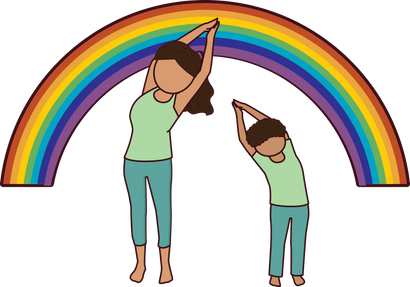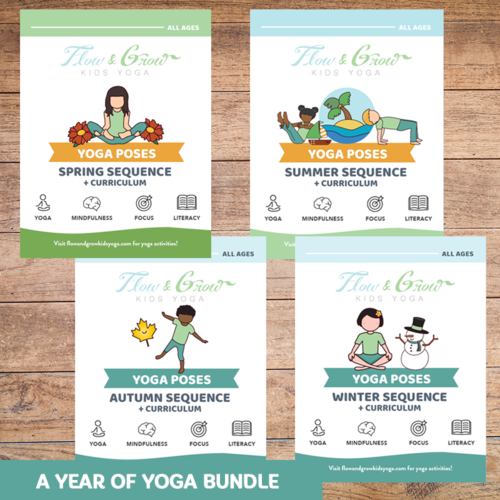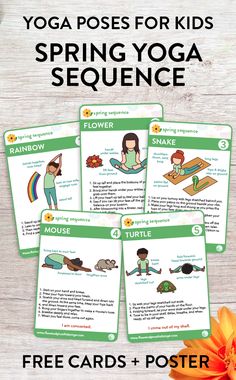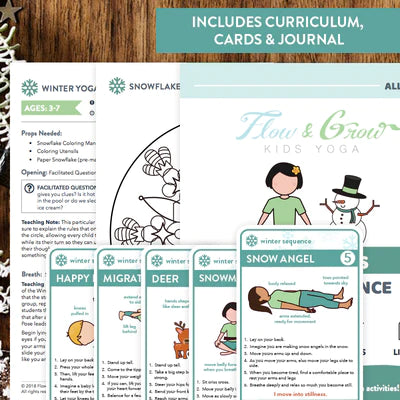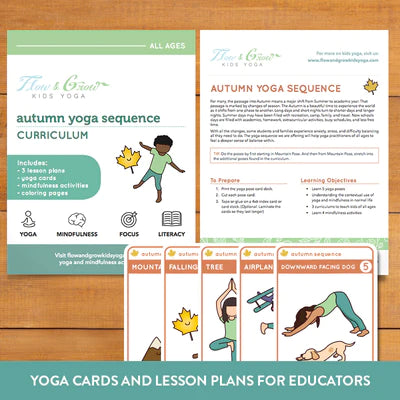Your Cart is Empty
22% off Automatically at checkout when you spend $5 of more!
22% off Automatically at checkout when you spend $5 of more!

Yoga for Anxiety
by Lara Hocheiser January 15, 2019 5 min read
“The beauty of yoga is that its benefits are available to students of every school-age group” (Hagen & Nayar, 2014)
The world is your playground!
Go ahead and slide into different courses of your life, climb ladders as you overcome obstacles, and swing through some fun. Remember, if you slip and fall, you can always brush yourself off and get back up.
I like to think of life as a playground. I always tell my adult yoga students that your yoga mat is your playground and you can play around as much or as little as you like during your practice. But, always remember, if you wobble in Tree Pose, have difficulty steading your gaze in Dancer Pose, or cannot quite get into Half Moon, do not worry. Just like we tell the children, brush yourself off and get right back up because you can do anything you set your mind to!
Alright...I know... you are probably thinking that is much easier said than done and trust me, it is much easier said than done. I know from experience! In this playground of life, as we climb up the ladder we sometimes slip and fall and we find ourselves sliding into a whirlwind of uncontrollable emotions, often known as anxiety.
As human beings, we experience a variety of emotions on a daily basis and we often find ourselves trying to maintain some level of equanimity, or emotional stability. Anxiety directly impacts our level of emotional homeostasis. Anxiety is typical and expected throughout life, especially when “faced with a problem at work, before taking a test, or before making an important decision” (National Institute of Mental Health, 2018). Although anxiety is sometimes that “kick in the butt” we need to overcome a fear or uncomfortable situation, it can manifest into debilitating forms that may negatively interfere with daily life activities. When this happens, you feel trapped behind a fence within your playground, with little space to move.
Today, anxiety is on the rise. Children and teens are a vulnerable population as they navigate the “fun” yet stressful world of social media, find the balance between work and school, maintain decent grades, and pursue lasting friendships. According to the 2015 Children’s Mental Health Report, 17.1 million children under the age of 18, have or have had a diagnosable psychiatric disorder, anxiety being the most common disorder. 80% of youth have a diagnosable anxiety disorder, which can often manifest into panic attacks, depression, separation anxiety disorder, conduct disorder, social phobia, and suicidality. One of the main reasons that so many youths have anxiety is because anxiety often goes undetected. It is normal for children to be afraid of the dark, get butterflies before a test, or feel nervous about a first sleepover. But, when this fear is constant and not taken seriously it can manifest itself into anxiety and interfere with daily life activities.

When I was a child, I was considered “shy.” I often stayed close to my mom at large social gatherings and gravitated towards quiet, less crowded areas. However, as I grew older, my mom realized that I was not necessarily shy, but maybe I had anxiety. Fast forward to the present, I am a fairly social individual and will strike up a conversation with many. But, if I am at a social gathering, you will be sure to find me talking to only one or two people off in a more intimate space. This by no means makes me a shy person, it just makes me ME! I have anxiety. I have learned to tolerate large gatherings, rooms filled with lots of noise, and situations that have tested my resilience. I am by no means a shy individual. I have anxiety and it makes certain situations a bit more difficult, but it no longer prevents me from doing things that I may have previously tried to get out of when I was younger. I have learned to navigate my life with anxiety.
Now, you may be asking, “Well, how have you been able to get through with anxiety?” I have tried many things to remedy my anxiety. I will be the first to tell you that there are some situations where your anxiety is going to get the best of you. That is okay! But, it is important to find ways to combat your anxiety and lessen its effects. One of the most effective solutions that I have tried and continue to use today is the practice of yoga. Now, in no way shape or form am I saying that yoga is a cure for anxiety. But, I do believe that yoga is a way to pause, breathe, and be in the present moment, something that anxiety often prevents us from doing.
Evidence-based research on the benefits of yoga for anxiety is still in its infancy. But, the research that has been published is promising. So, let’s get to it!
The Nitty Gritty Science
The emphasis on the breath and mind-body connection stimulates the sympathetic nervous system. The sympathetic nervous system is commonly referred to as “fight or flight.” However, through breath awareness, heart rate steadies, and the parasympathetic nervous system is stimulated. The parasympathetic nervous system, sometimes known as “rest and digest,” actually conserves energy and relaxes the body (Hagan & Nayar, 2014).
Yoga is a combination of physical, mental, and emotional exercise for the mind and body. It teaches children and adults how to connect the mind and body, not just internally but externally as well. Perhaps one of the best gifts that yoga has to offer is that there are no prerequisites. All one needs is a body and a mind. And, that is something that we all have!
Yoga provides an opportunity for anxious children to:
-
Improve self-esteem
-
Feel a sense of community
-
Learn breathing techniques to cope with various situations
-
Practice physical movement that is a safe way to combat anxiety
According to the National Institute of Mental Health, yoga “may have a positive effect on various aspects of mental and physical health” (Milligan, 2006). Yoga is a way to actively engage children in their own mental health journey as it teaches children to recognize their anxious feelings, “clarify repetitive or maladaptive thoughts, minimize avoidant behaviors, and self-monitor coping strategies” (Semple, Reid, & Miller, 2005). The breathing techniques that are incorporated into yoga is a form of self-management and teaches children how to focus on one stimulus at a time “[and from this] secure foundation of attention, the unremitting arising and fading of thoughts, emotions, and body sensations can be observed in an accepting, non-judgmental manner (Semple, Reid, & Miller, 2005).
Yoga provides a unique therapeutic environment that not only enables physical activity but also encourages self-awareness, emotional observance, and acceptance. This helps children to understand and accept their anxiety as a part of them and not necessarily something that needs to be changed, but rather something that needs to be managed. Through breathing exercises, yoga poses, and the family environment that yoga supports, children are bound to reap the benefits!
Now What?
We have the science, we have the benefits, and we all have the anxiety, so the question is now, what? Although there are yoga studios popping up on every corner, let’s be honest, it is not always feasible or economical to get to a studio. So, why not practice yoga in the comfort of your own home or even your own classroom? Yoga can be done just about anywhere and everywhere!
Calm nervous energy before bedtime with this Mindful Bedtime Yoga Practice
Educate teens about the importance of how self-care can help with anxiety through units on the Yamas & Niyamas
Leave a comment
Comments will be approved before showing up.
Also in Kids Yoga Blog

How Social and Emotional Learning and Yoga Help Kids Breathe Through Big Emotions
by Kane SEO April 21, 2025 4 min read
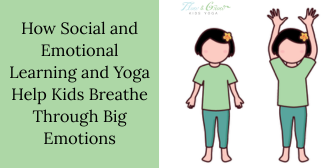
How Social and Emotional Learning and Yoga Help Kids Breathe Through Big Emotions
by Kane SEO April 14, 2025 4 min read
In classrooms and communities around the world, educators and parents alike are placing a growing emphasis onsocial and emotional learning. And for good reason: helping children understand, manage, and express their emotions in healthy ways is just as critical as teaching them to read or do math.

Power of Yoga for Kids: How It Helps Them Grow, Focus, and Thrive
by Kane SEO March 25, 2025 5 min read
In today’s fast-paced world, children are often exposed to stressors from a young age, whether it’s academic pressure, social challenges, or the overwhelming influence of digital devices. This can impact their physical, mental, and emotional well-being.
Ultimate Kids Year of Yoga Bundle
bundlespricey-contentdigital-resourcesearly-childhood-yoga-mindfulnesselementary-yoga-mindfulnesskids-yoga-resourcesmiddle-high-school-yoga-mindfulnessseasonal-yogayoga-cards
Ultimate Kids Year of Yoga Bundle
5 reviews
5.0 / 5.0
(5) 5 total reviews
$45.00
Ultimate Kids Year of Yoga Bundle
5 reviews
5.0 / 5.0
(5) 5 total reviews
$45.00
Kid’s Sun Salutation Yoga Cards
digital-resourcesearly-childhood-yoga-mindfulnesselementary-yoga-mindfulnesskids-yoga-resourcesliteracyunder-15yoga-cards
Kid’s Sun Salutation Yoga Cards
3 reviews
4.33 / 5.0
(3) 3 total reviews
$10.00
Kid’s Sun Salutation Yoga Cards
3 reviews
4.33 / 5.0
(3) 3 total reviews
$10.00
Yamas and Niyamas: Successful Relationships with Self & Others (tweens and teens)
pricey-contentdigital-resourceskids-yoga-resourceslesson-plansmiddle-high-school-yoga-mindfulnessmindfulness
Yamas and Niyamas: Successful Relationships with Self & Others (tweens and teens)
2 reviews
5.0 / 5.0
(2) 2 total reviews
$49.00$55.00
Yamas and Niyamas: Successful Relationships with Self & Others (tweens and teens)
2 reviews
5.0 / 5.0
(2) 2 total reviews
$49.00$55.00
